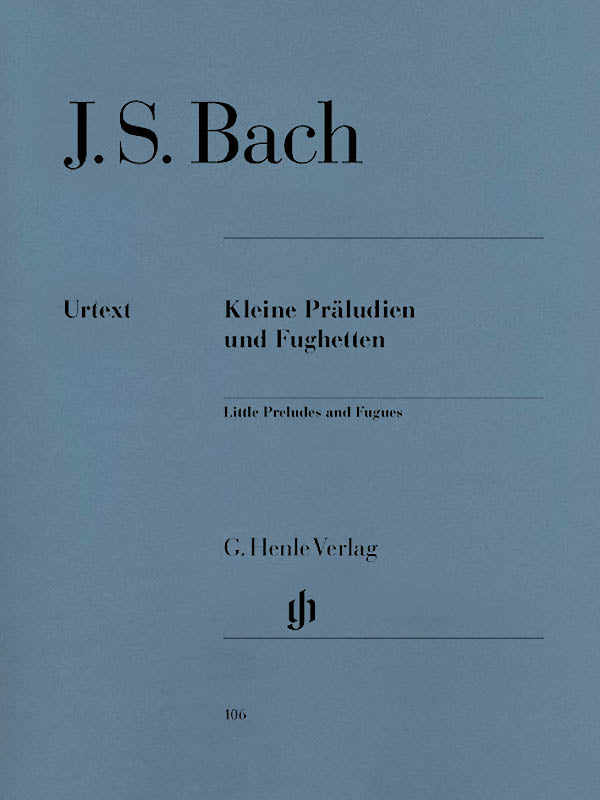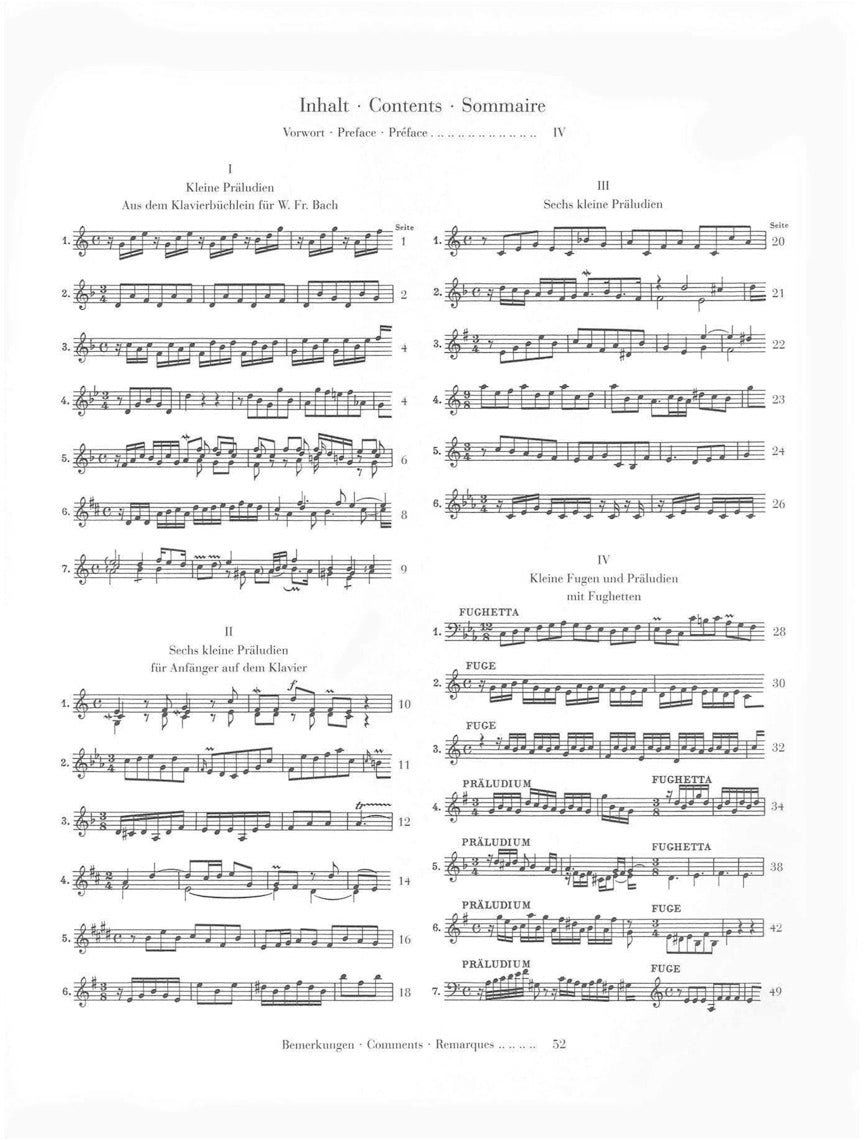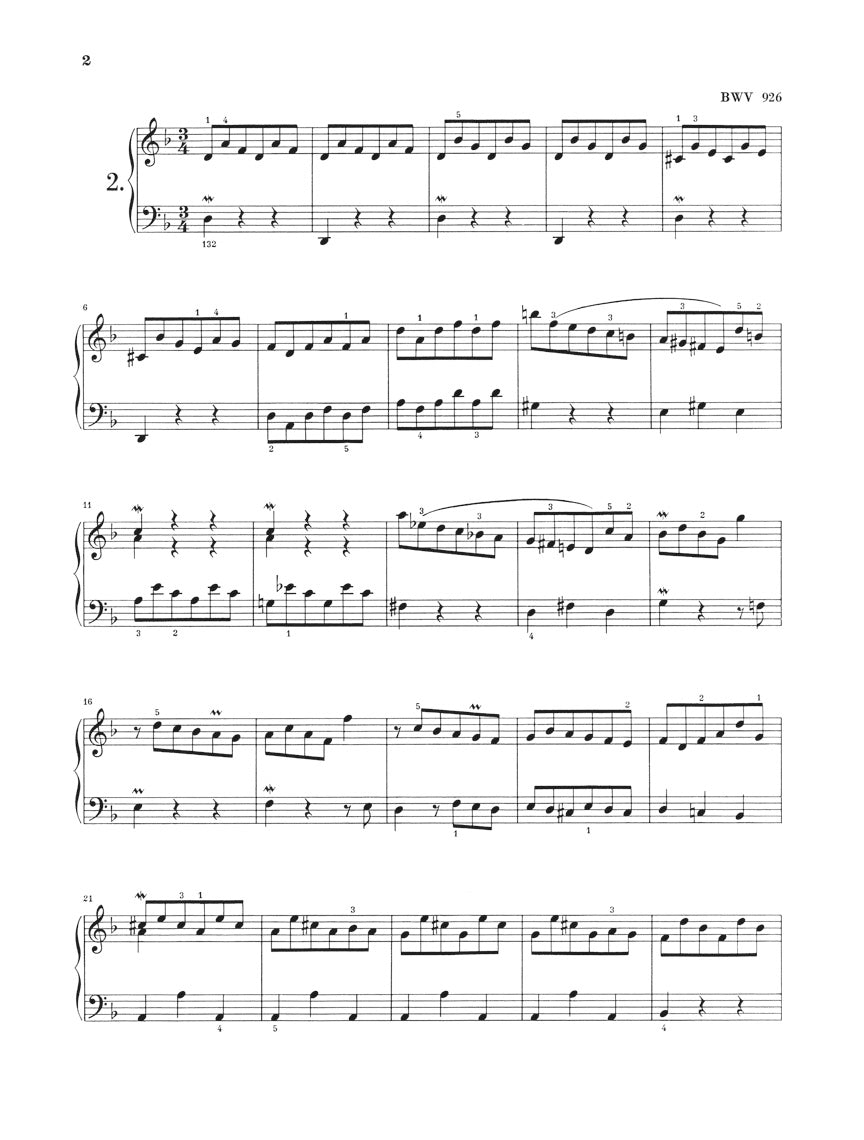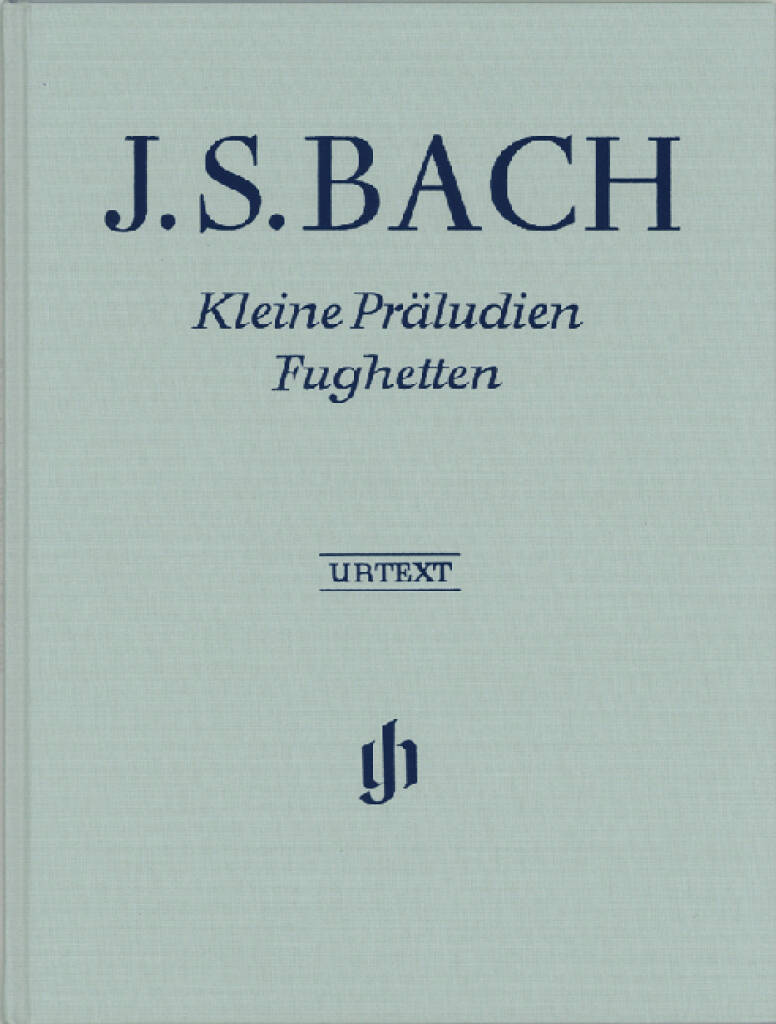Bach: Little Preludes and Fughettas
In stock and typically ships within 1 business day.
- Composer: Johann Sebastian Bach (1685-1750)
- Editor: Rudolf Steglich
- Fingering: Hans-Martin Theopold
- Instrumentation: Piano, Keyboard, Lute
- ISMN:
- Size: 9.3 x 12.2 inches
- Pages: 54
- Urtext / Critical Edition
Description
This edition with over 50 pages contains the universally known selection of easy preludes and little fugues that has proved extremely successful in teaching the piano. Bach's sons, with Wilhelm Friedemann and Carl Philip Emanuel leading the way, were already able to learn them. If you make your way through these pieces (which gradually become more challenging), you can make great progress on the piano, and what is more these 300-year-old compositions are still able to work their musical magic. Those who are technically more advanced should still occasionally sight read through them; you will then immediately see that they are real gems.
Works:
- Little Prelude in C Major, BWV 924
- Little Prelude in D Minor, BWV 926
- Little Prelude in F Major, BWV 927
- Little Prelude in G Minor, BWV 930
- Little Prelude in F Major, BWV 928
- Little Prelude in D Major, BWV 925
- Prelude in A Minor, BWV 931
- Little Prelude in C Major, BWV 933
- Little Prelude in C Minor, BWV 934
- Little Prelude in D Minor, BWV 935
- Little Prelude in D Major, BWV 936
- Little Prelude in E Major, BWV 937
- Little Prelude in E Minor, BWV 938
- Little Prelude in C Major, BWV 939
- Little Prelude in D Minor, BWV 940
- Little Prelude in E Minor, BWV 941
- Little Prelude in A Minor, BWV 942
- Little Prelude in C Major, BWV 943
- Little Prelude in C Minor, BWV 999
- Fughetta in C Minor, BWV 961
- Fugue in C Major, BWV 952
- Fugue in C Major, BWV 953
- Prelude in G Major, BWV 902a
- Fughetta, BWV 902
- Prelude and Fughetta in D Minor, BWV 899
- Prelude and Fugue in E Minor, BWV 900
- Prelude and Fugue in A Minor, BWV 895
Publishers use a lot of words to describe what they sell, and we know it can be confusing. We've tried to be as clear as possible to make sure you get exactly what you are looking for. Below are descriptions of the terms that we use to describe the various formats that music often comes in.
Choral Score
A score for vocalists that only contains the vocal lines. The instrumental parts are not there for reference. Generally, cheaper than a vocal score and requires multiple copies for purchase.
Facsimile
Reproductions of the original hand-written scores from the composer.
Full Score
For ensemble music, this indicates that the edition contains all parts on a single system (there are not separate parts for each player). In larger ensembles, this is for the conductor.
Hardcover
Hardbound. Generally either linen-covered or half-leather.
Orchestral Parts
Similar to a wind set, this is a collection of parts. In the case of strings, the numbers listed are the number of copies included, though generally these are available individually (often with minimum quantities required).
Paperback
When publishers offer multiple bindings (e.g. hardcover) or study scores, this is the "standard" version. If you're planning to play the music, this is probably what you want.
Performance / Playing Score
A score of the music containing all parts on one system, intended for players to share. There are not separate parts for each player.
Set of Parts
For ensemble music, this indicates that there are separate individual parts for each player.
Solo Part with Piano Reduction
For solo pieces with orchestra, this is a version that contains a piano reduction of the orchestra parts. For piano pieces, two copies are typically needed for performance.
Study Score
A small (think choral size) copy of the complete score meant for studying, and not playing. They make great add-ons when learning concertos and small chamber works.
Vocal Score
A score prepared for vocalists that includes the piano/organ part or a reduction of the instrumental parts.
Wind Set
For orchestral music, this is a collection of wind and percussion parts. The specific quantities of each instrument are notated.
With Audio
In addition to the printed music, the edition contains recordings of the pieces. This may be an included CD, or access to files on the internet.
With / Without Fingering (Markings)
Some publishers prepare two copies - a pure Urtext edition that includes no fingering (or bowing) suggestions and a lightly edited version that includes a minimal number of editorial markings.







